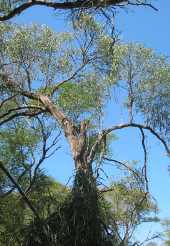Gallery Forest at Berenty |
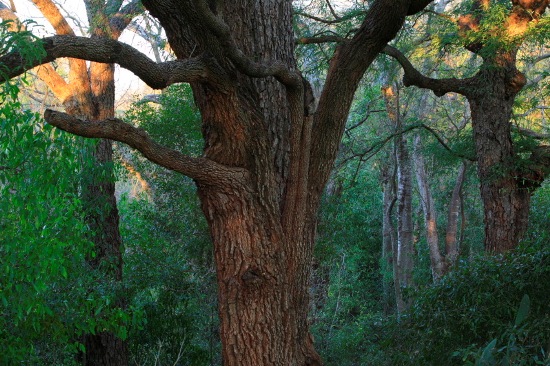
Dense gallery forest with kily trees in Berenty Reserve © Cyril Ruoso, www.ruoso-grundmann.com
About Berenty's Gallery Forest |
Gallery forest on the floodplain of the Mandare River grows in semi-isolated patches on river bends, here it forms vulnerable "islands" of vegetation. There are many species of trees, but the dominant ones are Tamarind (Tamarindus indica: Malagasy kily) and Acacia (Acacia rovumae: Malagasy benono). These two species form a large part of the overarching canopy at Berenty.
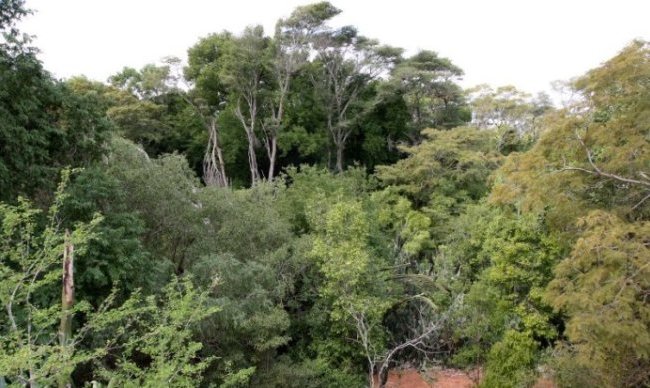 Berenty Gallery Forest © photo by Coke Smith
|
|---|
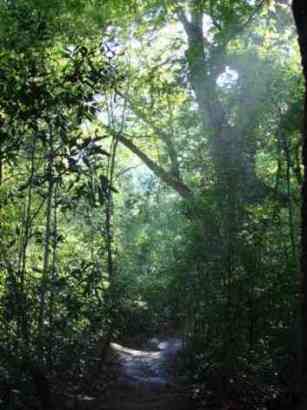 |
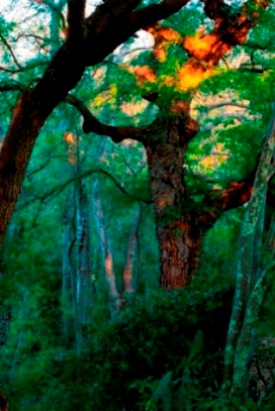 |
||
|---|---|---|---|
Large kily in spring rain |
Trunk of a young kily with older kily behind |
The tamarind, a pantropical tree that may have originated in Madagascar, can grow up to 30 m tall with a crown of 12 m diameter. Due to its long taproot, extensive root system and tolerance for a variety of soils, it is well suited for life at Berenty. It is deciduous, dropping its leaves for a brief two weeks in October before new buds burst. Its lifespan is commonly believed to be about 200 years but much older trees may survive in favourable locations where there is full sunlight and moisture for roots especially during early development. Tamarinds are a staple food source for both ring-tailed and brown lemurs – and humans. Its brown, sausage-like pods contain an acidic pulp an ingredient of confectioneries, curries and pickles, drinks and soups - especially during famine times.
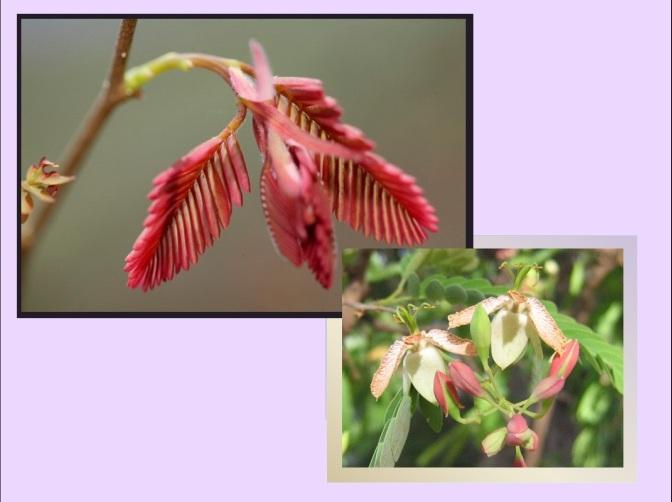 New kily leaves © photo by Cyril Ruoso, www.ruoso-grundmann.com
New kily leaves © photo by Cyril Ruoso, www.ruoso-grundmann.com
...and flowers - twice yearly © photo by A Jolly
Amongst the other large forest trees favoured as food sources for lemurs are Neotina isoneura (voleli), Crataeva excelsa, Celtis philipensis (tsilikatsifaka) and C. bifida (bemavo). Of the smaller plants the most unwelcome is Capparis chrysomeia, Lover-of-men (tehalahy) vine whose hooked barbs carried on wire-thin stems lie in wait to snare people trying to walk through the undergrowth and, worst of all Cissus quadrangularis, a vine from Africa that is drowning the forest in waves of succulent vegetation that smother seedling trees. To add insult to injury the quadrangularsectioned segments of Cissus are bordered by fine fibre glass-like hairs that can get under the skin. A more welcome invader is prickly pear (Opuntia sp) a native of Mexico, it is both eaten by the lemurs and used by the locals as cattle fodder during droughts and for natural fencing: they call it sakafondrano (water-food). It is worth mentioning in addition, very many of the plants in both the spiny and gallery forests are locally used as a source for medicines.
_MASTimg_BreakfastMale_(DC).jpg)
_MASTimg_BerentyWebsiteMasthead.jpg)







